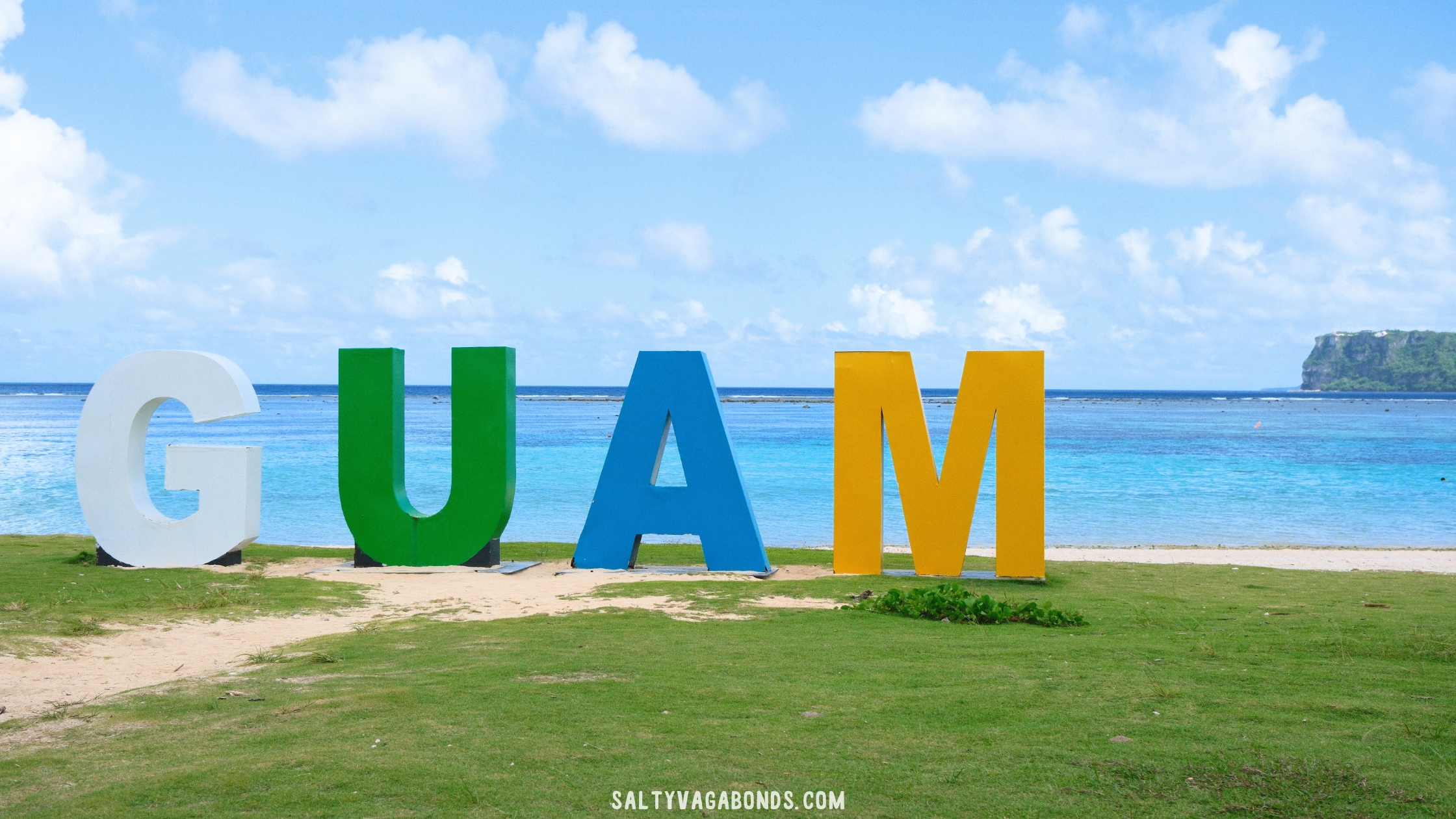
Top 5 Reasons to Choose a Guam Vacation Over Hawaii
Discover the 5 reasons to choose Guam vacation over Hawaii! From year-round warm waters and vibrant Chamorro culture to uncrowded beaches, unique WWII history, and family-friendly adventures, Guam offers a tropical escape that feels both authentic and unforgettable.
saltyvagabonds
Destinations
Travel Tips
Planning
About us
Saltyvagabonds
If you click on links we provide, we may receive compensation.
Our Guam vacation started off as a bit of a whirlwind. After leaving Hawaii with barely any sleep, we found ourselves back at the terminal and boarding another Space-A (Space A to Asia series here) flight much sooner than expected.
On that flight, we ran into Joe, a fellow traveler we’d first met on our hop from JBLM to Hawaii (Learn how to fly Space A here). As it turned out, Guam was his home, and he generously shared insider tips and local gems we should check out once we landed.
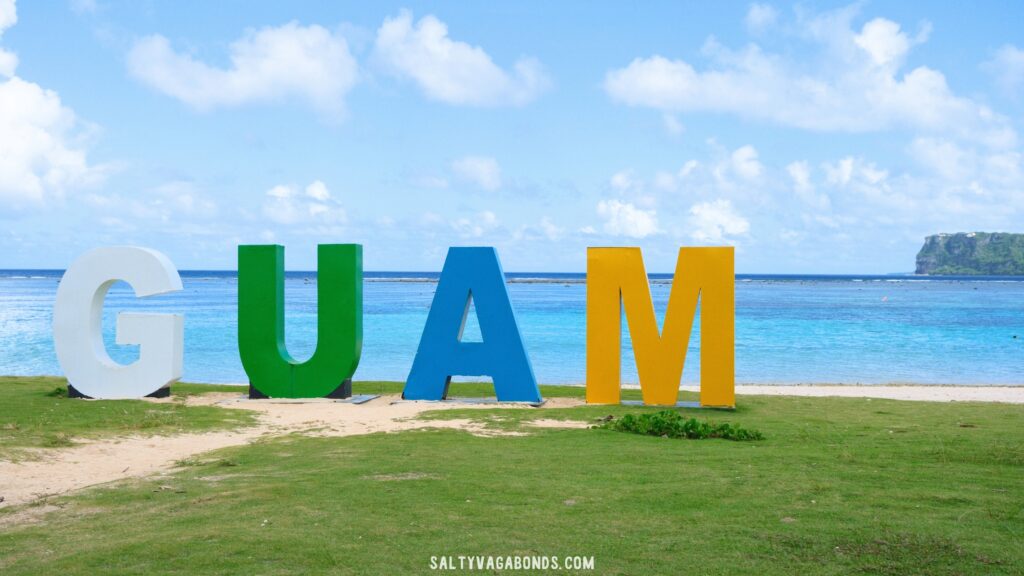
After a few long days of military aircraft and layovers, stepping off the plane in Guam felt like arriving in a hidden paradise. We quickly realized that Guam isn’t just a stopover, it’s a hidden gem in the Pacific full of history, culture, and warm hospitality. What started as an unplanned detour soon became one of our favorite family adventures.
The Chamorros Are Exceptionally Friendly
One of the things that stood out most during our trip was the incredible hospitality of the Chamorro people. From the moment we landed in Guam on our Space-A flight, locals made us feel right at home. Joe, a fellow traveler, offered us a ride without hesitation.
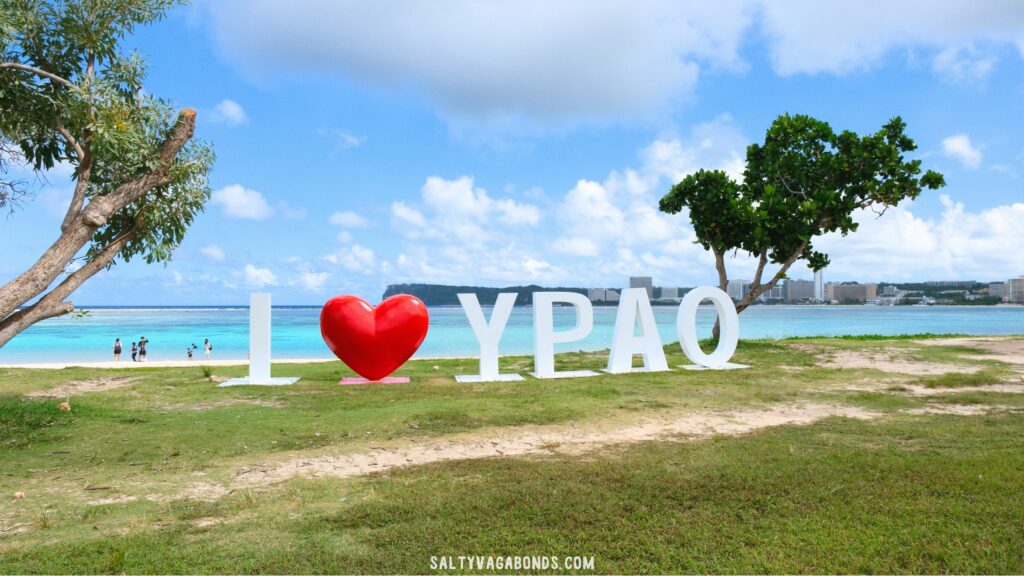
The lifeguards at Gov. Joseph Flores Beach Park (Ypao Beach Park) were welcoming and kind. And at the Guam Museum (Department of Chamorro Affairs), Dave greeted us with open arms, shared stories about sailing canoes, favorite local foods, and even the struggles of recovering from a hurricane. We ended up chatting with him for nearly an hour before leaving with big hugs all around.
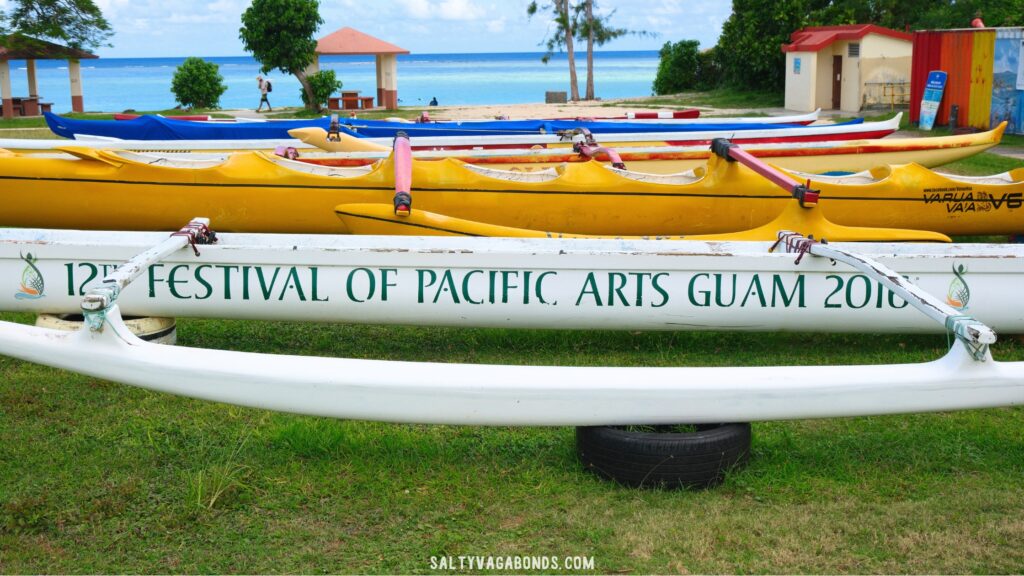
This level of warmth made a lasting impression on our family. Having spent weeks in Hawaii last year, we noticed the difference. While Hawaii is beautiful, Guam felt uniquely open and welcoming, more like genuine southern hospitality in the Pacific. For families, that kind of atmosphere makes travel not just enjoyable, but memorable.
It’s safe to say that the friendliness of the Chamorro people is one of the best reasons to put Guam on your family travel list.
The Hotels in Guam Are More Budget-Friendly
One of the biggest surprises during our trip was how much more affordable the hotels in Guam were compared to Hawaii. We stayed at three different places, the Navy Gateway Inn on Andersen AFB, the Dusit Thani Guam Resort, and the Hyatt Regency Guam, and all offered great value.
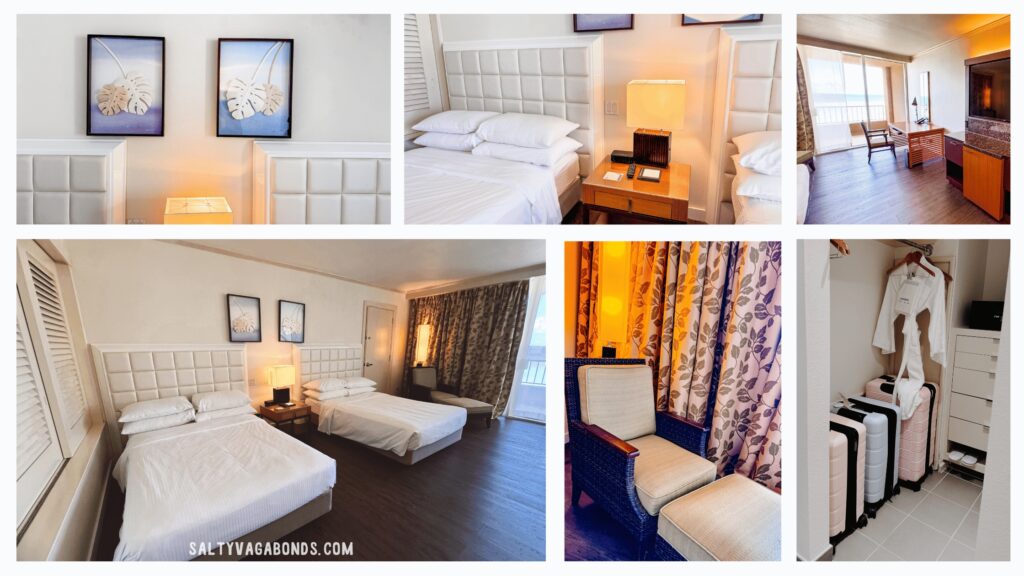
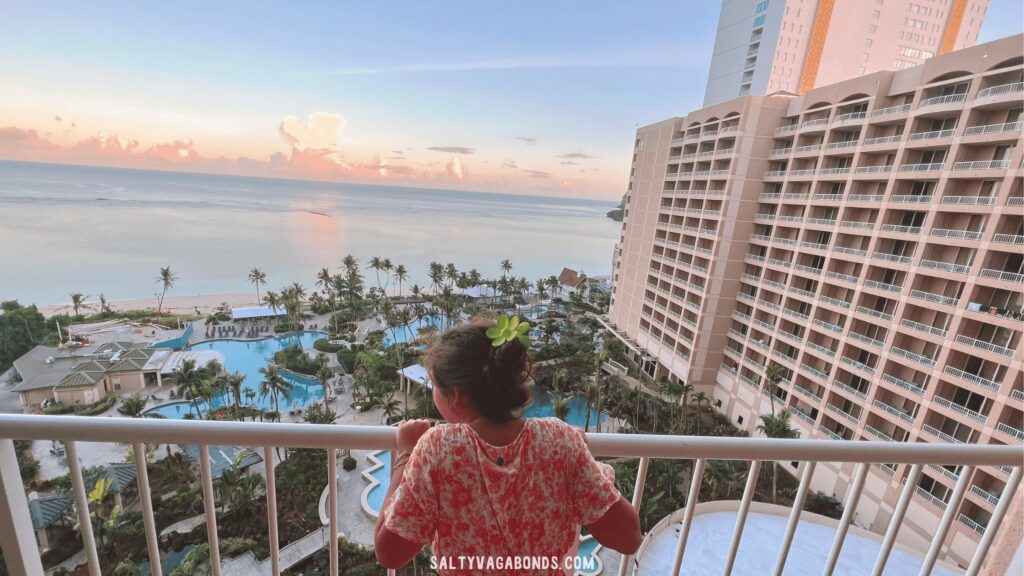
The Hyatt was the priciest at just over $200 a night. To put that into perspective, our stay at the Hilton in Waikiki ran well over $400 per night. Not only were the prices better in Guam, but the overall experience was calmer: fewer crowds during the week, quieter beaches right outside the pool area, and soft sand with gentle surf perfect for kids.
The value at the Hyatt Regency Guam (full review here) easily rivaled what we’ve paid in Hawaii, unless you qualify to stay at the Hale Koa, which isn’t an option for most travelers. Add in the stunning bay views from both the Dusit Thani and the Hyatt, plus excellent customer service across the board, and Guam became an easy favorite for us.
For families weighing Guam vs Hawaii, the combination of lower hotel rates, fewer crowds, and equally beautiful scenery makes Guam a clear winner.
The Crowds Are Smaller in Guam
One of the biggest differences we noticed between Guam and Hawaii was the crowds, or rather, the lack of them in Guam. Every time we’ve visited Hawaii, the beaches and hotels have felt packed to full capacity, no matter the day of the week. In Guam, it was the opposite.
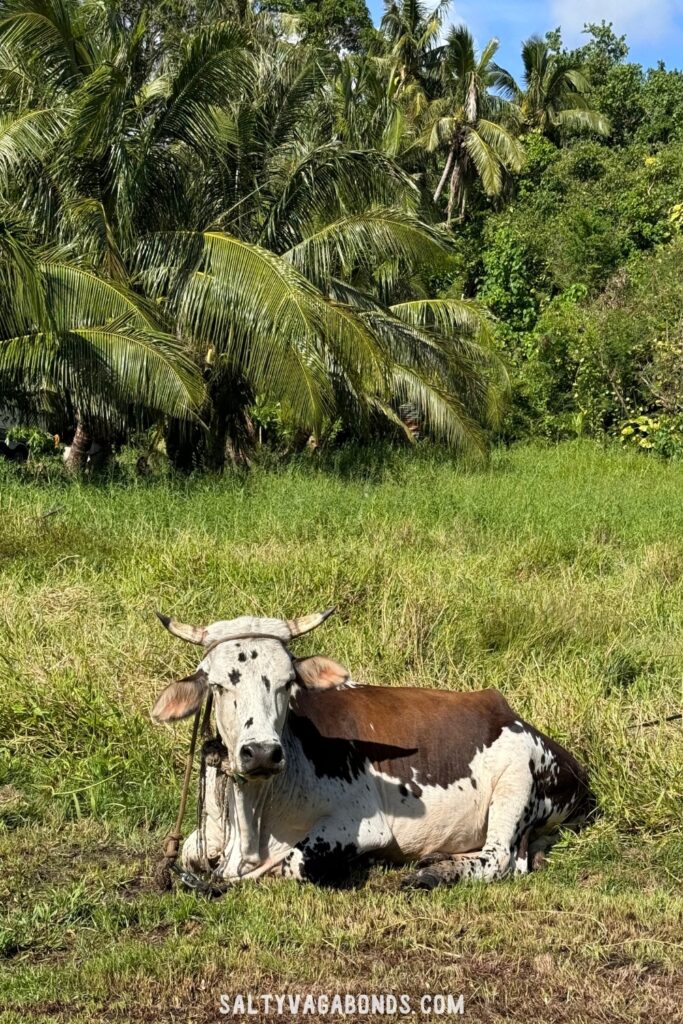
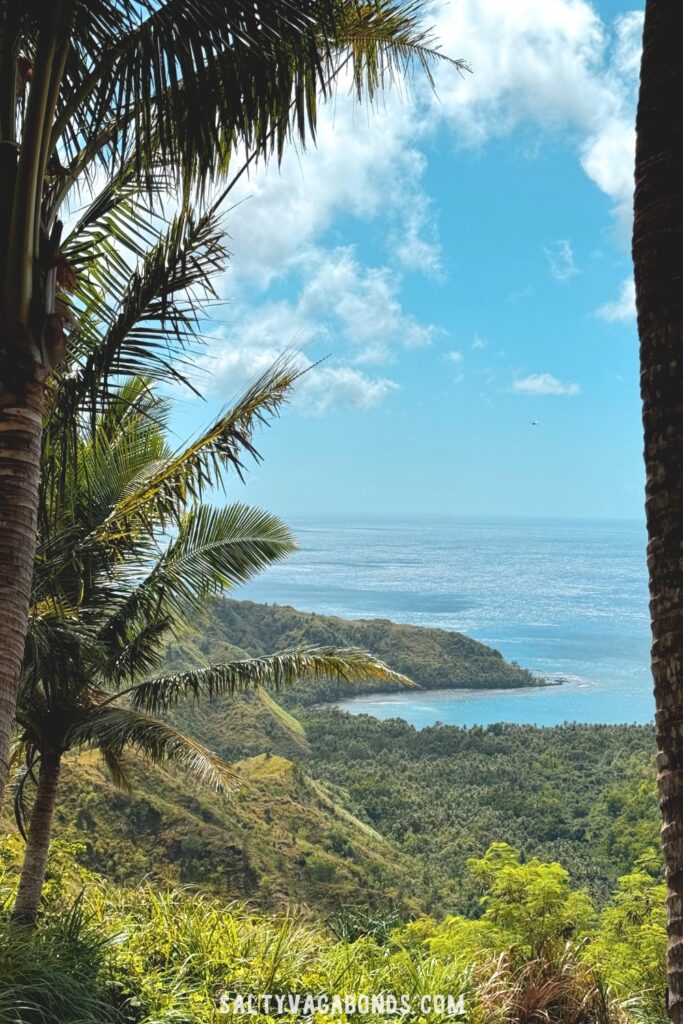
Most of the tourists we encountered in Guam were from Korea, Japan, and other nearby Asian countries, often visiting for a long weekend getaway. During the week, the hotels thinned out to what felt like half capacity or less. That meant no fighting for beach chairs, no racing to claim a spot on the sand, and little to no wait time for restaurants in town.
The only exception we found was Primo Pizzakaya, easily the best pizza on the island, where there was a small crowd outside when we left. Everywhere else? Wide-open beaches, easy dinner reservations, and a calm, relaxed vibe we instantly fell in love with.
For families, this makes Guam an even better choice. You still get the turquoise water, soft sand, and great food, but without the stress of navigating overwhelming crowds.
There’s More History in Guam
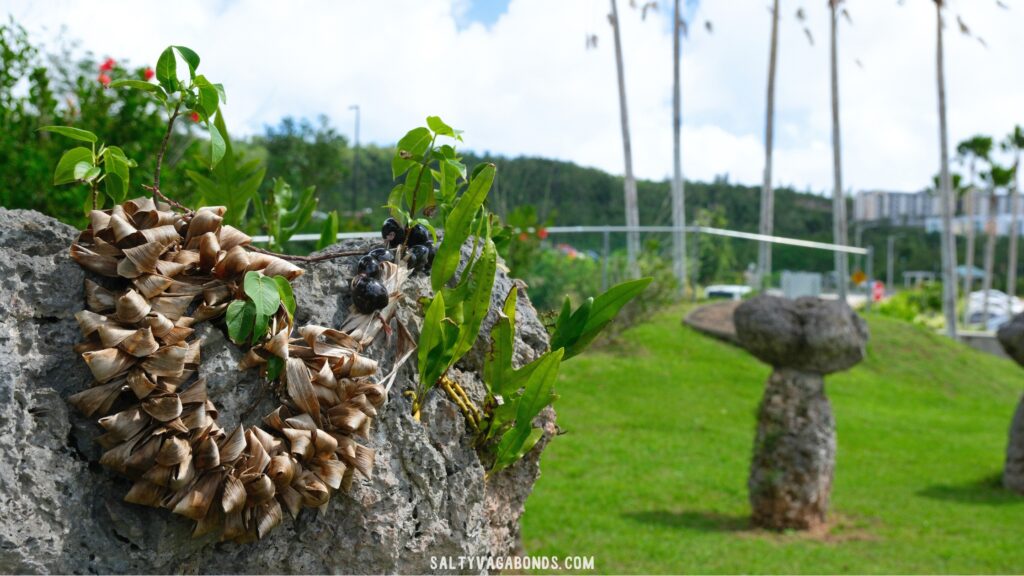
One of the most surprising parts of our trip was just how much history in Guam is visible everywhere you go. The island has both a fascinating geological story and a rich cultural one.
Geologically, Guam sits right by the Mariana Trench, the deepest place on Earth at nearly 36,000 feet below sea level, deeper than Mount Everest is tall! It’s wild to think about when you’re standing on this tiny island in the Pacific.
Culturally, Guam’s story begins with the Chamorro people, who first settled here as Polynesians moved east across the Pacific. Their traditions are still alive today, if you’re in Tumon Bay early in the morning, you might see locals paddling va’a canoes, carrying on a heritage that’s lasted for centuries. You’ll also spot latte stones and references to Chamorro seafaring history all over the island, sometimes even on hotel grounds.
Colonial history left its mark too. The Spanish used Guam as a vital resupply stop on the trade route between the Americas and the Philippines. You can still visit Fort Nuestra Señora de la Soledad in Umatac to see remnants of this era.
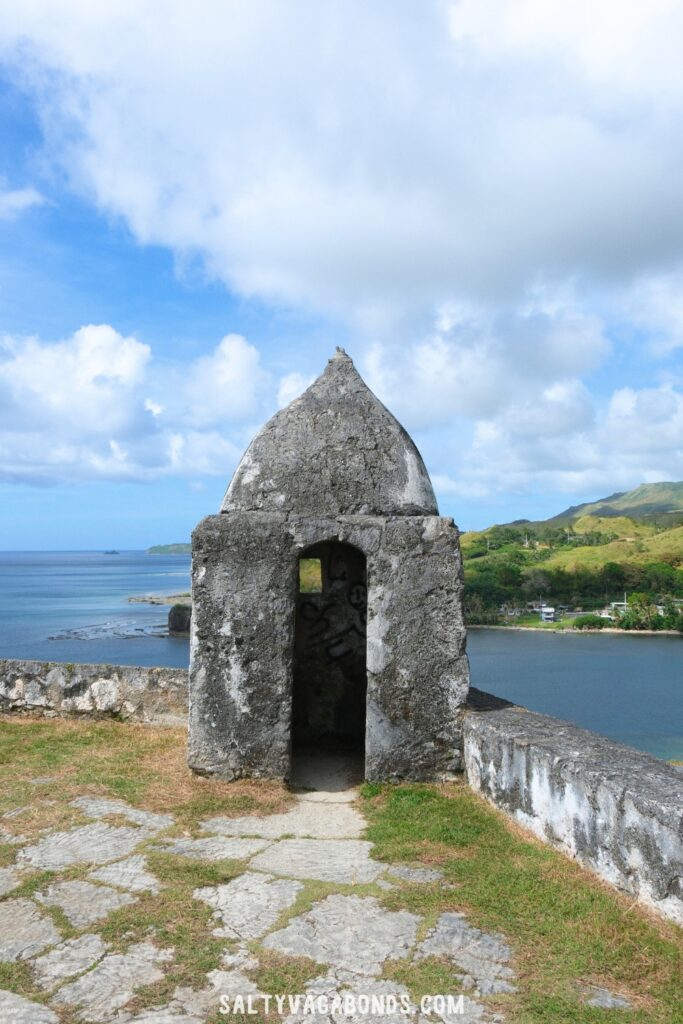
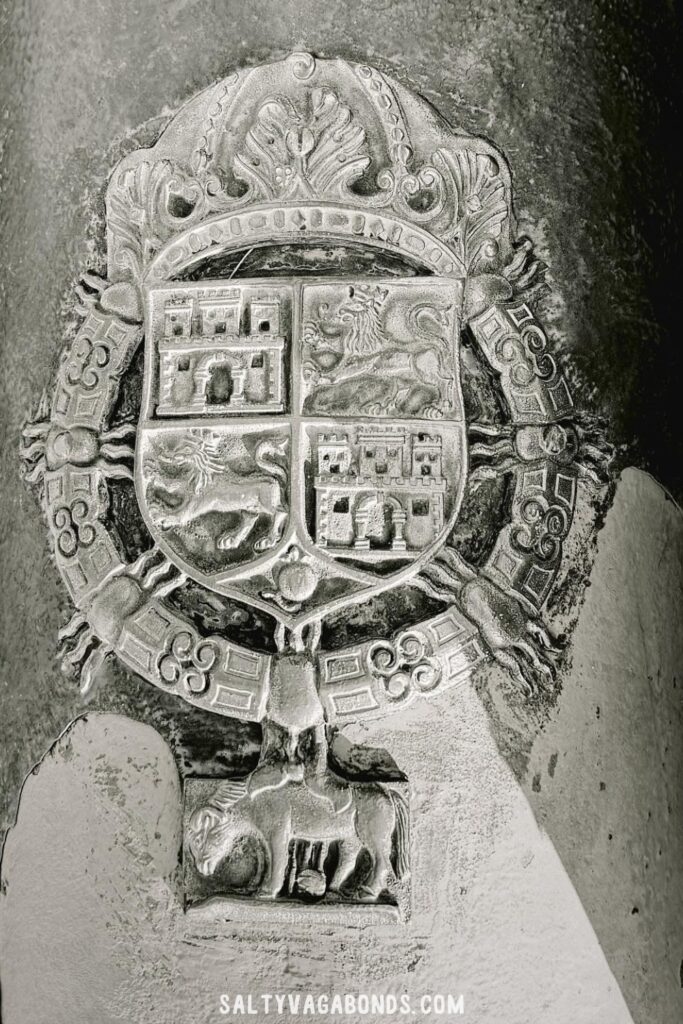
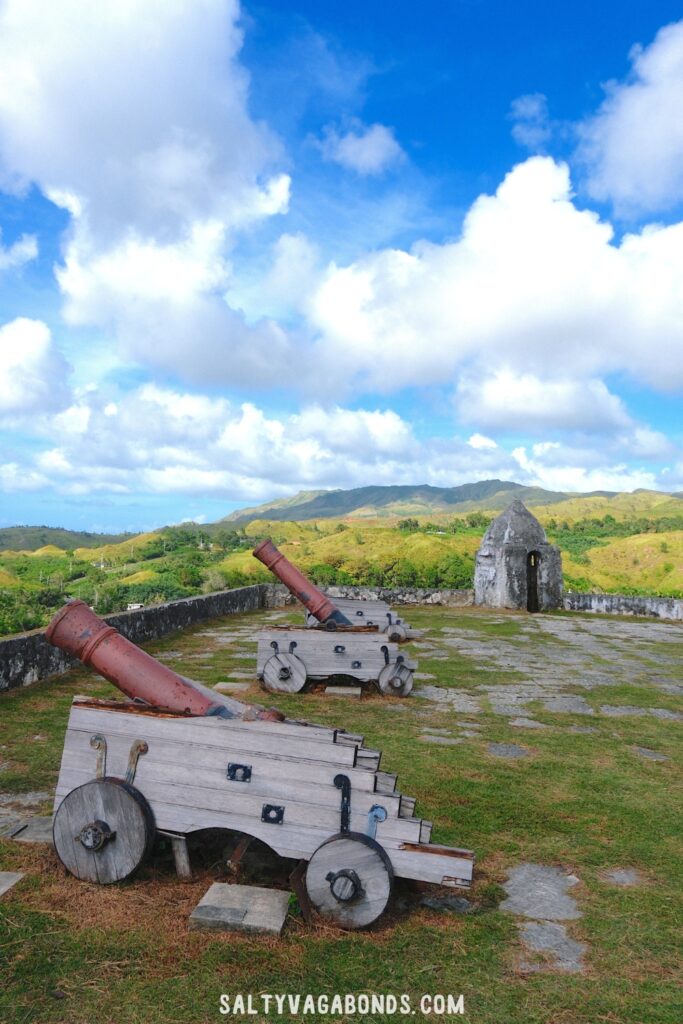
Later, Guam became part of the U.S. in 1898, before falling under Japanese occupation from 1941–1944. That period brought incredible hardship to the Chamorro people, and it’s part of why you’ll find such deep patriotism on the island today. WWII relics like pillboxes in Tumon Bay and memorials across the island keep that history alive.
For us, Guam became more than just a tropical vacation, it turned into a worldschooling destination, where our family learned about geology, ancient traditions, colonial history, and WWII all in one place. It’s hands-on history you can see, touch, and experience together as a family.
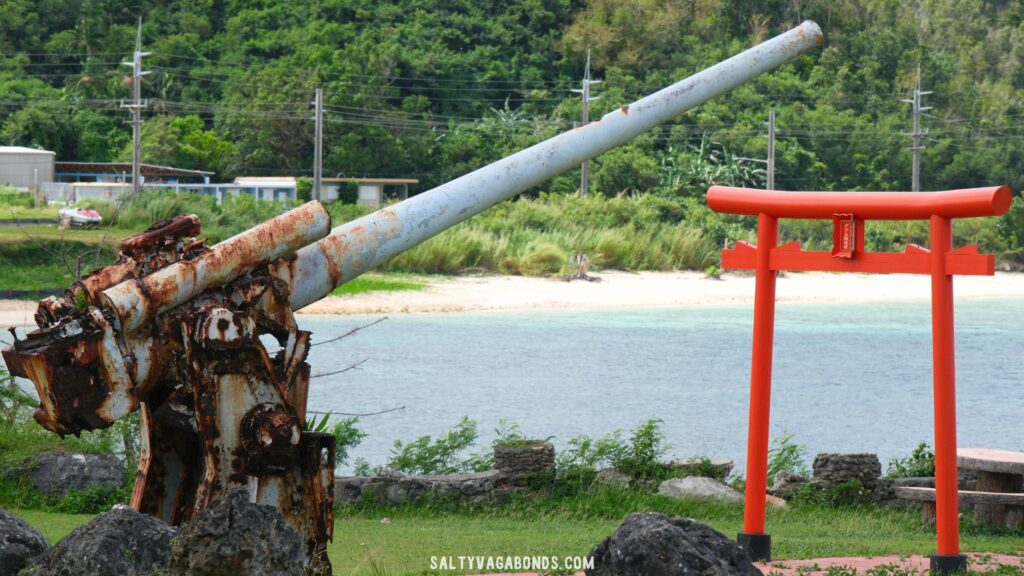
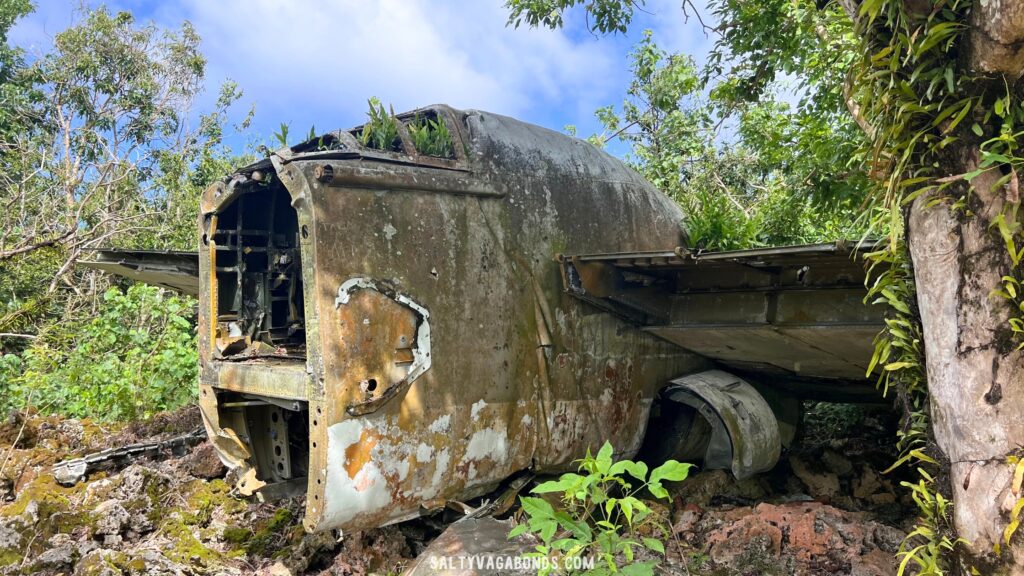
The Weather in Guam Is Better
As a meteorologist, I’ve always been fascinated by the weather and the ocean, and honestly, the tropical climate in Guam won me over. While Hawaii is often portrayed as a year-round paradise, the reality can be a little different.
The islands can be rainy, damp, and even chilly, especially in the winter months. The ocean in Hawaii gets cold enough that you often need a wetsuit to stay comfortable if you’re snorkeling or diving.
Guam, on the other hand, stays warm and tropical year-round. When we visited in November, the air was balmy, and the ocean water was warm enough for hours of swimming, reef diving, and snorkeling without a wetsuit. For me, that’s what a tropical paradise should feel like.
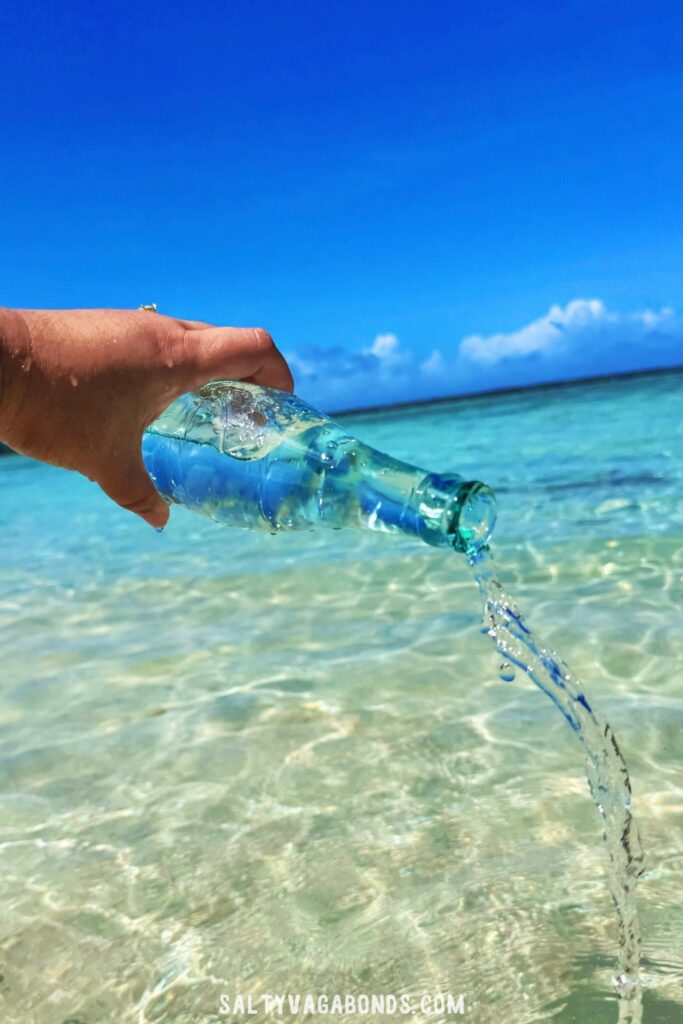
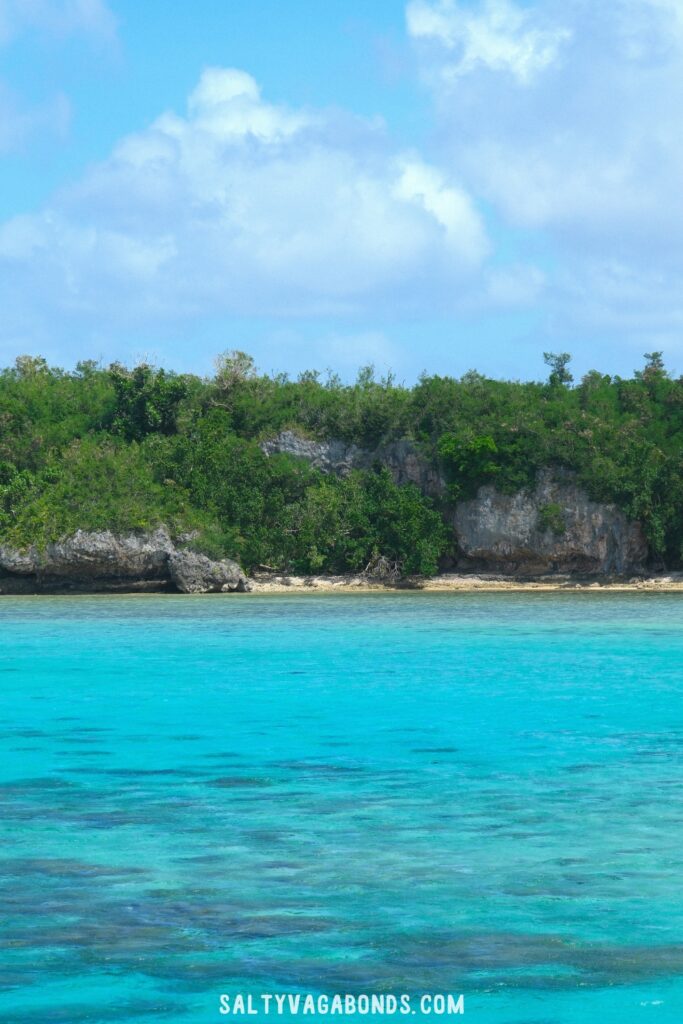
From a meteorologist’s perspective, Hawaii’s variety of climates is unique, you’ll find everything from tropical to alpine conditions across the islands. But if you’re traveling with family and want guaranteed sunshine, warm temps, and ocean water that feels like a bath, Guam’s weather is hard to beat.
This is one of the biggest reasons we’d choose Guam over Hawaii for a family trip. And if you’ve been to both, we’d love to hear which one felt more like paradise to you?
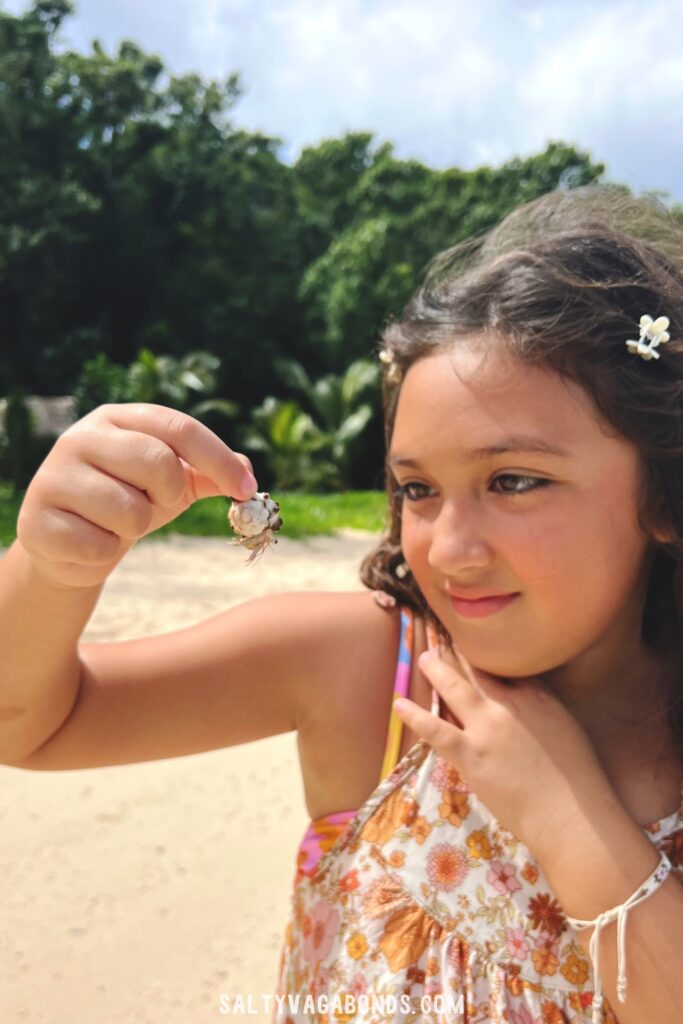
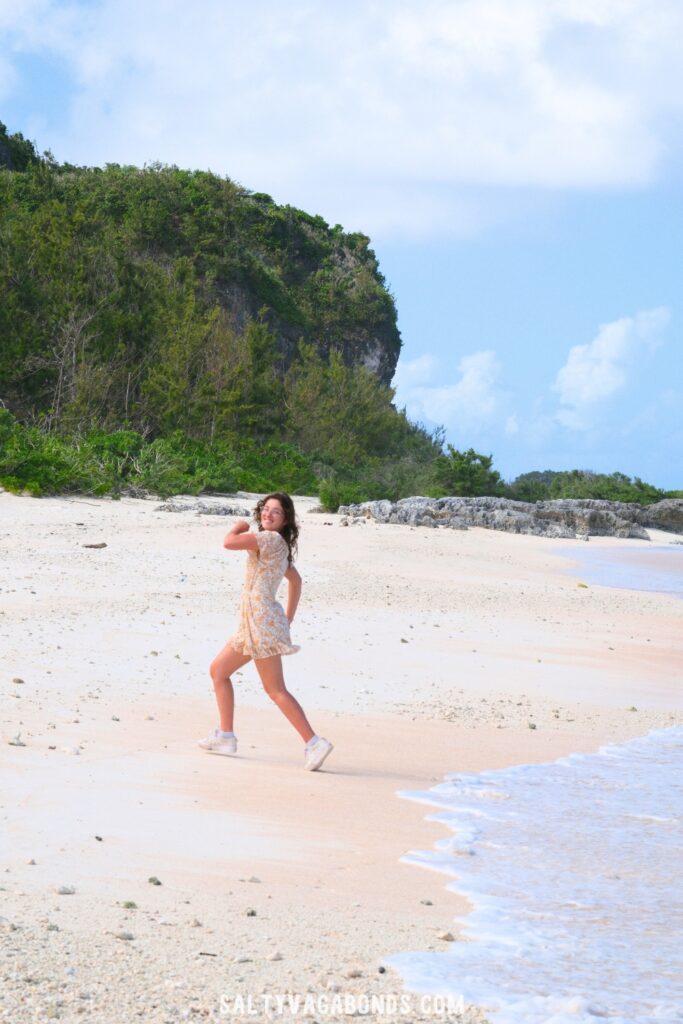
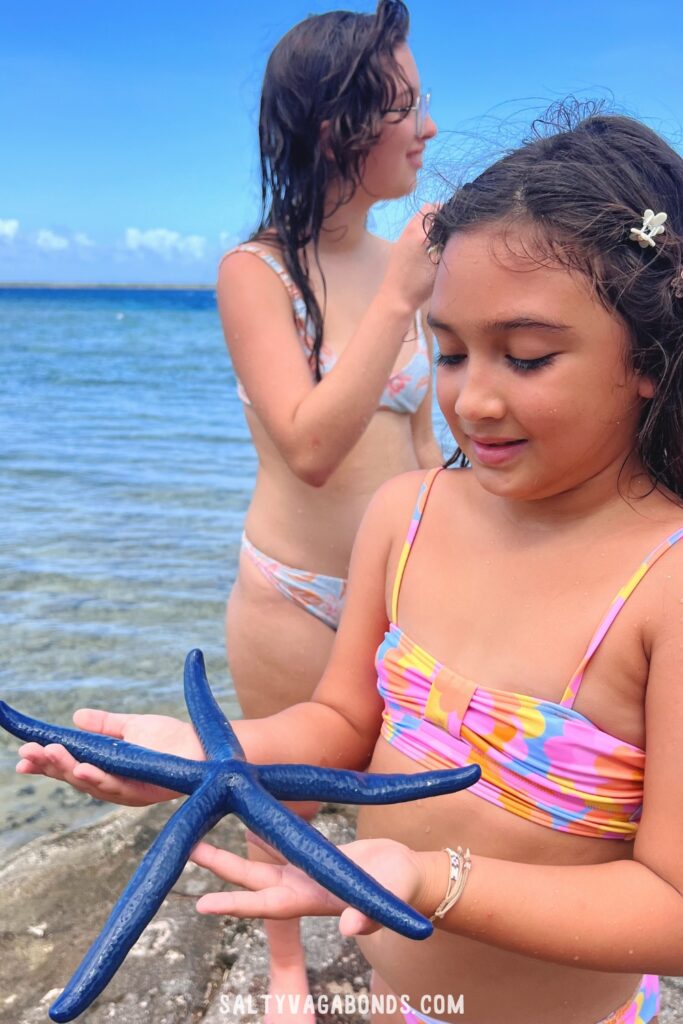
Why you should take your family on a Guam vacation?
Guam is where history, culture, and turquoise beaches come together with warm Chamorro hospitality. A Guam vacation means fewer crowds, budget-friendly resorts, and plenty of family adventures. If you’re planning your trip, don’t miss our full guide on the top things to do in Guam for families, it’s packed with must-see spots and insider tips.
Our Story
Message in a
bottle?
Join our Newsletter! We're sharing monthly tips & tricks for travel, discounts & more.
Travel Blogs
About us
Contact
Tips & Tricks
hello@saltyvagabonds.com
Link in Bio
Work With Us
SpaceA Military Flights
Santa Fe Travel Guide
Visit Disney Aulani Hawaii
Family Packing Guide
Our Photography Gear
Plan Your Travel
See you soon!
Planning
Tips
Destinations
Oceania
North America
Europe
Asia
Bali
Japan
Korea
Malaysia
singapore
Thailand
Vietnam
France
U.K.
Germany
Canada
Mexico
usa
French Polynesia
Micronesia
Hawaii
Guam
Indonesia
All Travel Blogs
Destinations
Planning
Tips
Destinations
Travel Tips
Planning
About us
Hotels
via Booking.com
Car Rental
Book a Bus/Train/Transfer
Find Cheap Flights
Get ESIM or SIM Card
Easy Currency Exchange
Book Tours & Attractions
Get Travel Insurance
via Discover Cars
via Skyscanner
via 12Go
via Wise
via Viator
via Visitors Coverage
via SimOptions